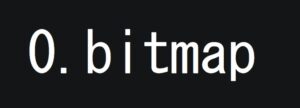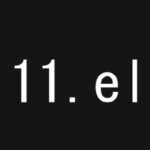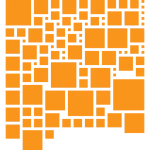Please note that this information is based on the author's personal understanding at the time of writing.
For more information, please refer to the relevant White Papers and the latest information.
日本語版
bitmap Holders Who Could Claim $BMP (BRC20)
Related X: BitEarth $BMP
The claim period ended on December 31, 2023. (I haven't looked into it in detail, but BitEarth made a massive claim and airdropped to those who didn't claim)
On the claim website, by connecting your wallet, you could claim an amount corresponding to the number and specific bitmap numbers you held.
As of now, "$BMP" can be traded on various markets.
As of the writing date (January 20, 2024), there have been no announcements regarding utility as it is still under development.
With $BMP, it was possible to make one claim per bitmap.
It is believed that the API to retrieve bitmap information was hit off-chain on the claim site to verify the right to claim.
(It seems that the determination of whether a bitmap had been claimed was not made on-chain, but rather by storing the bitmap number in an off-chain database (or json, etc.) and determining if it had been claimed?)
Therefore, there were movements to sell the bitmap after claiming.
Inscribing as a Child of bitmap
- Token that has a clear parent-child relationship with bitmap
- Only the owners of the targeted bitmap can inscribe
- Ownership is independent of the bitmap
- There is a possibility that an infinite number may appear in the future, so only two are introduced in this article (planned)
- For details, check the DMT White Paper: digital-matter-theory
$BMT
The first Blockdrop.
It connects as a child to the bitmap.


Reference
Q. What is this?
A. As of the time of writing, it is not known what it will be used for, but from the use of the following element, it is understood that "it belongs to the DigitalMatterTheory element registry, and interprets the balance in hexadecimal numbers of bits assigned to the block of bitmap."

Below is the deployment text.

The deployment text itself is tied to 0.bitmap owned by Mr. Bitshi.

$BTT
At the time of writing, what is known is that the number received is based on the number of transactions (equivalent to the number of parcels).
It is assumed to be an element type like ???.14.element, but details are awaited.
References
Notes
- Within DMT, there seem to be types like NAT or BAKED that refer to blocks and can be inscribed publicly, and types called Brockdrop (?) that make bitmap the parent
- When minting NST or BAKED, even though you mint with a UI that lines up blocks like bitmap, it's not interpreted as land but as targeting the block that has the hash value in question, so making the UI visually easy to see makes it look like a map.
The element of NATS is "dmt.11.element," so among DMT, the stock of each block as an element is the number of bits.
The element of BAKED is "food.d00f.11.element," so translated into Japanese it means "An element of the food category (food), with the hexadecimal d00f (d00f), having the bits (11), belonging to the DMT element category (element)" (as I understand it...).
Thoughts
I find the concept of Blockdrop, based on bitmap, to be a very efficient one when wanting to create a free-mint token.
As of the time of writing, there are 32,000 bitmap holders, although the number of active users is unknown.
For instance, starting a project on the ETH chain with NFTs can lead to a rapid increase in followers, reaching thousands within a few days,
This leads to an influx of direct messages and replies that are difficult to distinguish between being from humans or bots, all of which require processing.
Human management of the whitelist inevitably leads to some mishaps, which then require further investigation and resolution.
Moreover, these reports of issues could also potentially be scams.
You can only proceed to launch an NFT after navigating through the uncertainties and rush of whether the contract functions correctly and whether the whitelist is properly managed.
Additionally, the fact that bitmap holders can mine at their leisure if they realize the appeal later on also feels like an answer to the dilemma I personally perceive with NFTs: the desire to popularize them while not wanting to create a disparity, yet needing to do so to retain active participants.
With these considerations in mind, I believe the concept of Blockdrop, which enables a token launch targeting the dispersed and early bitmap holders, is particularly compelling.
The DMT types like NATS and BAKED, which fair-mint by referencing the Bitcoin blocks themselves, are intriguing, but there is also the risk of these elements becoming unpopular due to mass purchasing by bots.
However, by referencing the Bitcoin blocks directly, if DMT becomes popular, it will lead to bots and wealthy individuals using a substantial amount of gas to execute their transactions, in the interest of block generation.
In that regard, it could also become one method of preventing a shortage of miners.

